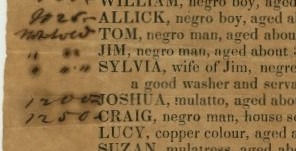Mapping ideas in exhibitions
- Cait McQuade

- Aug 8, 2023
- 3 min read
In my exhibit development classes, I have sometimes taken students to part of a history exhibition where I’ve covered up all the text. I ask them to come up with the theme or Big Idea for that section. What can they discern about the intended interpretation just from the objects on display, their position relative to each other, their size or sequence? Next I let them read the text. I ask how it compares to their initial understanding. If I know what the planners intended, I’ll tell them about that. We discuss whether the objects, by themselves, communicated the intended meaning.
Personally, I’d be pretty frustrated by a history exhibit with absolutely no labels in it. (An art exhibition might be different, but that’s a whole other discussion.) And yet, I believe the arrangement of objects communicates quite a bit to visitors, in ways we can use to design more intentionally.
Humans are pattern finders, right? Even if we’re not aware it’s happening, we notice repetitions, similarities, and differences in what we see and hear. We pick out things that don’t belong, that stand out. (Those of us of a certain age remember the lyric “one of these things is not like the other” from Sesame Street.) It’s all automatic, hard-wired into us because it has helped us survive. We enjoy discovering a pattern. It’s how we learn.

Noticing a pattern is enjoyable and educational at a more fundamental level than reading an exhibit label. Museum visitors sort and classify what they see as soon as they enter a gallery, before they read anything, because that’s what they’re doing all the time anyway. In the display case pictured at left, there are four different platforms holding objects. You might start looking for similarities among objects on a single platform and differences between the groups on each platform.

In the gallery shown at right, there are a number of pairs: the chests of drawers, the chairs farthest away, the framed things. Those pairs have some obvious similarities, and you might start comparing them and noticing how they’re also different from each other.
When you visit an exhibition, you’re aware that other people have chosen and arranged these things, and you can easily conclude that any patterns you notice were planned. You’re ready to interpret them.
And, of course, exhibit planners do design repetitions, similarities, and differences into our exhibitions, for the very purpose of communicating meaning. We group objects deliberately, shine brighter light on some places than others, make some words or sentences are larger than others, like in the gallery shown below, at History Colorado Center.

I tell my exhibit development students that arranging objects in a display is like drawing a map. Exhibits map the relationships between objects; and, more importantly, between objects’ meanings. An example comes from a summative evaluation we conducted of an exhibition at the Missouri History Museum. It turned out that the Big Idea visitors took away often corresponded to the two biggest objects on display: a fridge-size beer brewing kettle and a reconstructed streetcar. They were bigger than everything else, so, I think they seemed more important, more central.
Have you ever seen a display where a single object sits centered in an array of other ones? Maybe a steel tool surrounded by the raw materials needed to make it. That’s essentially a mind map, a graphic device used in education to help students see relationships between ideas: this thing causes that thing, this one depends on that one.
We use mind maps to plan exhibition floor plans. At left are slides I use in my class to show how a written outline becomes a mind map becomes a floor plan.
Another example: we might arrange busts and paintings of George Washington chronologically in a central gallery, from which radiate other spaces. One of the side galleries holds objects related to his family, another to his military career, another to his presidency.
Let’s go back to my exercise with the students. I ask them to revise a group of objects so as to communicate more clearly the display’s main idea. More often than not, they remove items rather than adding things. They decide that some objects are red herrings that led them away from the main idea. In our pattern finding, humans try to account for everything we see. For many reasons, exhibit planners sometimes over stuff a wall or a case with things that have only a tangential relationship to the main idea.
It helps me to keep in mind that we're composing a map of ideas, not just gathering a bunch of stuff related to a topic.









Comments